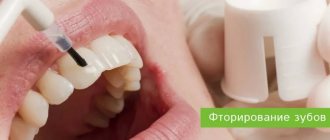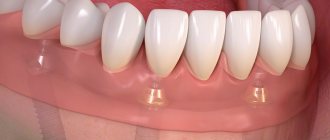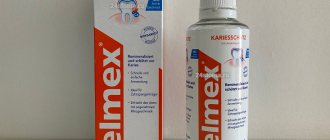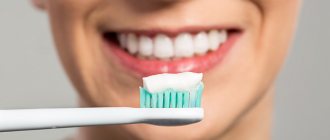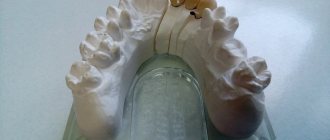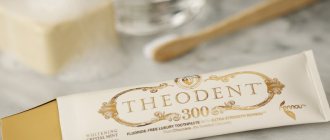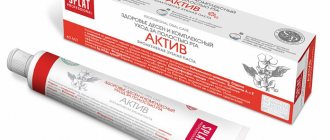- What is xylitol
- What is xylitol made from?
- Properties of xylitol
- Benefits of xylitol
- Benefits of xylitol for children and teenagers
- Where is xylitol used?
Sugar is one of the most dangerous foods for dental health. However, you cannot completely give up sugar. Firstly, it is useful for memory, vision and the normal functioning of all organs and systems. And secondly, sugar is contained in one degree or another in all foods (even low-fat yogurt, vegetables and herbs). If it is difficult for you to limit your consumption of sweets, it is best to use its healthy analogues - for example, xylitol.
What is xylitol
Xylitol (or xylitol) is a natural sugar substitute with properties beneficial for teeth and gums. It has no side effects like regular sugar or artificial sugar substitutes. When replacing sugar with xylitol, it stabilizes insulin levels and improves overall health. Natural xylitol reminds us all of sugar - it is white, has a crystalline structure and a sweet taste. The body is able to produce from 5 to 15 g of xylitol on its own by breaking down carbohydrates. That is, for us xylitol is a natural, not alien element.
How to buy or order xylitol?
Please note that xylitol in hygiene products and products may have another name: food grade xylitol, xylitol (Xylitol), XyloSweet, Polysweet, Xyla. Birch sugar can also be purchased in its “pure” state. It is sold in pharmacies and stores in powder, sometimes in cubes or dragees, in various mixtures, and its price is relatively low.
At home, xylitol can be added to hot coffee and tea, used in the preparation of various dishes instead of sugar, and used in canning. However, it is worth remembering that the substance does not support fermentation, therefore, it is ineffective for yeast dough, and it does not turn into caramel at any temperature.
Chewing gum with xylitol will come in handy if you can’t brush your teeth after eating. Chew it for no more than 10 minutes, until the pleasant taste remains, and no more than two pads or one plate at a time.
If you want to use birch sugar as a means of protection against caries, it is better to buy it as part of products specially designed for this purpose. In the Startsmile online store you will find various toothpastes with xylitol, rinses, chewing gum, lozenges and lozenges containing xylitol.
Benefits of xylitol
- Prevents the growth of bacteria
and reduces the risk of caries. - Normalizes the acid-base balance
, strengthening the enamel. - Has an antifungal effect
. Oral infection Candida albicans feeds on glucose, and when it is replaced with xylitol, it gradually goes away. - It has a positive effect on the gums
, reducing the amount of plaque on them and reducing the risk of inflammation of periodontal tissue. - Retains water
on the surface of the gums, moisturizing and softening them. - Increases salivation
and improves the protective properties of saliva. - Has minimal effect
on sugar and insulin levels. - 40% less calories
than sugar.
Structural form and features of xylitol
Xylitol or xylitol consists of white crystals, is highly soluble in liquid, and has energy value.
It can be found in a large number of fruits, berries, vegetables, and mushrooms. In industrial production, the compound is obtained by processing corn cobs and certain types of trees. The structural form of xylitol is CH2OH(CHOH)3CH2OH.
Xylitol was first discovered in the 19th century in Europe and was used as a sweet-tasting additive. The sugar substitute was especially popular among people suffering from diabetes (insulin does not take part in the absorption of xylitol). The compound in question is absorbed extremely slowly. Most of the crystalline substance is produced in China.
In the middle of the 20th century, people began to use it in the chemical and food industries. Xylitol is found in many medications.
Many food manufacturers present xylitol as a food additive (E967), which is a stabilizer, dietary sweetener, and emulsifier. This additive is not used for the production of yeast flour mass, since it has the function of slowing down the “work” of yeast. The substance is considered safe and is approved for use in more than three dozen countries around the world.
In addition, xylitol has an antibacterial effect, therefore it is widely used in industrial production. For example, it can be used to keep raw meat fresh for 14 days. To do this, the product must be soaked in a sweetish liquid (with the addition of a sugar substitute).
In the chemical field, this substance is used for the production of esters and resins. In pharmacology, the production of medicinal lollipops and cough syrup, toothpastes, and chewable vitamins based on a sugar substitute is widely known.
But xylitol is also widely used in the manufacture of dental products. Not everyone is confident in the safety of this component, so you need to learn more about its properties for the oral cavity.
Rating of the best children's pastes
- Splat Baby "Apple Banana". Suitable for children up to one year old. Along with the paste itself there is a special silicone brush that fits on your finger. In production, only natural ingredients are used, which makes it absolutely safe even if swallowed.
- Babycoccole . The manufacturer produces pasta in several flavors: strawberry, banana and apple. It does not contain any substances that may be harmful to the child or allergens. It has a pleasant taste, and most importantly, it prevents the development of caries.
- Chicco with strawberry flavor . Recommended for children over one year old. Does not contain fluoride, abrasives, is rich in calcium and xylitol, which prevents the development of caries.
- ROCS Kids "Citrus Rainbow" . Suitable for children aged 4 to 7 years. Its distinctive ability is the rapid formation of a protective layer on the surface of the teeth, which prevents the loss of calcium and phosphorus. Regular use reduces the likelihood of developing caries and inflammation of the gums, and also helps to normalize the microflora of the oral cavity.
- Biorepair Junior Mint – with sweet mint flavor. Recommended for use by children aged 7 to 14 years. It contains the proprietary micro Repair component, which has a protective effect and also restores microdamage to the enamel.
Toothpaste must be safe and of high quality. It should not contain sulfates, antibacterial substances, dyes, or flavors. Should be rich in calcium and lactic enzymes. Choosing the right toothpaste will improve the quality of your child's teeth and help you avoid expenses at the dentist's office. .
Is the component harmful and is it allowed during pregnancy?
The xylitol contained in toothpaste is not harmful to the human body if the instructions in the instructions are followed. The negative impact of this substance is possible only if there is an individual intolerance to the component and/or if the permissible standards of use are exceeded. In addition, xylitol has a weak laxative effect (at high concentrations when taken orally).
A pregnant woman must follow all oral hygiene recommendations given by the dentist. The expectant mother needs to brush her teeth twice a day with a brush of weak or normal hardness. You can use both an electric toothbrush and a regular one.
If necessary, the doctor will prescribe medicated pastes containing xylitol, intended for cleaning teeth in an interesting position. Pregnancy is not a contraindication for the use of such products. However, the expectant mother needs to regularly visit the dentist (2-3 times during the entire period of gestation) for a preventive examination and professional cleaning.
It is strictly not recommended to use products containing xylitol if:
- hypersensitivity to the compound in question;
- epilepsy;
- in children up to three years of age.
The content of xylitol, like any other substance included in toothpaste, can be found from the information on the packaging and/or tube.
How to choose a sweetener?
There are many sweetener substitutes, but when choosing the right one for yourself, you should keep in mind that artificial (synthetic) sugar substitutes are not only not good for our body, but also harmful. The use of synthetic sweeteners can lead to health problems and, paradoxically, to weight gain.
The thing is that artificial sugar substitutes do not contain nutrients and are not beneficial for the body. Due to the combination of sweet taste and lack of calories, they cause the body to experience a strong feeling of hunger and store fats in reserve.
That is why, when it comes to sweeteners, it is better to use natural rather than synthetic ones. Natural ones are xylitol, honey, molasses, stevia, agave syrup, maple syrup, palm sugar and others. In this article we will take a closer look at xylitol.
Sweeteners for weight loss
It's no secret that the amount of sugar we consume is directly related to our weight. According to research conducted by scientists, in order to achieve tangible results in losing weight, you need to reduce the amount of sugar in your diet. Conversely, in order to gain weight, you should consume more sugar. Nowadays, the problem of excess weight is relevant for a large number of people. Statistics say that every third person on Earth suffers from excess weight. That is why in the modern world so much attention is paid to sweeteners. The demand for them is growing every year.
Visiting the dentist:
- Twice a year
Examination of children for early diagnosis of dental caries and its complications. Detection of dental anomalies and early orthodontic treatment. Monitoring the condition of the gums Recommendations for brushing teeth. Selection of oral hygiene products. Removing dental plaque and plaque (if necessary)
Teeth cleaning:
The oral care procedure should be regular and carried out in the morning after breakfast and in the evening before bed. Teeth brushing time – 3 minutes.
Basic oral hygiene products:
- Manual toothbrush/ electric toothbrush
- Toothpaste (as recommended by a dentist)
A preventive manual toothbrush should have: medium-hard bristles; rounded and polished bristle tips; a rounded head shape corresponding to the size of the teeth; small head, which ensures maneuverability in the oral cavity; volumetric handle for better grip of the brush in your hand.
For teenagers, an electric toothbrush should be like this: With a preventative brush attachment With a two-level arrangement of bristles Have two levels of hardness - medium and soft, with an indication of the degree of wear of the bristles With a round head With moderate vibration
Additional oral hygiene products:
- Dental floss
- Rinse aid
- Foams
- Dental brushes
- Chewing gum (sugar-free)
- Tongue scraper
- Irrigator
Dental brushes are used to remove plaque from between teeth. It is especially important to use dental brushes for patients with periodontal diseases, fixed orthopedic and orthodontic structures in the oral cavity.
It is recommended to use dental floss before brushing your teeth with toothpaste, and if you use a mouthwash, then after toothpaste, before the rinsing procedure.
Dental floss, or floss, was developed specifically for cleaning the contact surfaces of teeth that are difficult to reach with a brush.
Flosses are made from special synthetic fiber. They can be waxed or unwaxed, round or flat. Dental floss with special preventive impregnations that strengthen tooth enamel in hard-to-reach places is also effective.
Mouth rinse is recommended as an additional hygiene product, because... It cleans the interdental spaces well and has a deodorizing effect. The rinse aid must contain fluoride and not contain alcohol. Rinse your mouth for 1 minute, do not swallow.
The use of dental rinses allows you to destroy a significant part of the bacteria remaining after brushing. By improving the condition of the gums, the risk of periodontitis and other dental diseases is reduced. Teeth rinses help maintain their whiteness, strengthen enamel, fight the formation of tartar and prevent the formation of caries.
Irrigation of the oral cavity is carried out using an irrigator by supplying a constant or pulsating stream of water under pressure. Has a cleansing, massaging and healing effect. The procedure time for the gum of one jaw is 2-3 minutes.
ATTENTION! The use of irrigators for oral hygiene cannot completely replace a toothbrush.
Foam is used to clean teeth when it is not possible to use a regular toothbrush. The action of foams is expressed in cleaning and leveling the acid-base balance in the oral cavity, which prevents the growth of dental plaque and the development of pathogenic microorganisms in it.
A tongue scraper should be used daily to remove plaque from the surface of the tongue.
Xylitol (xylitol) has pronounced anti-caries properties: it has a specific antimicrobial effect against the most cariogenic microorganisms, accelerates salivation, improves self-cleaning of the oral cavity and increases the ability of saliva to strengthen tooth enamel. The use of chewing gum containing xylitol is recommended after meals for 10-15 minutes.
ATTENTION! However, it must be remembered that excessive intake of xylitol into the body can lead to unwanted side effects, as it promotes diarrhea. The daily dose of xylitol for an adult is from 30 to 50 grams.
Professional oral hygiene (teeth brushing) is a system of treatment and preventive measures performed in a dental clinic, aimed at preventing the occurrence and progression of oral diseases. In this case, the doctor or hygienist removes plaque and tartar and polishes the surfaces of the teeth.
Professional oral hygiene should be carried out at least once a year.
Nutrition:
Products that are healthy for teeth should contain a small amount of sugar and sufficient amounts of vitamins and minerals. It is beneficial to eat solid foods, raw vegetables and fruits.
Avoid eating sugar-containing foods (sweets, cookies, etc.) between main meals.
Avoid drinking sugary carbonated drinks.
| Healthy foods for teeth Raw vegetables and fruits Nuts, dried fruits Milk, cheese, meat Fish, tea | Harmful foods for teeth Caramel, lollipops, chocolate Sweet carbonated drinks Sugar-containing chewing gum |
Caries
The cause of the development of this disease is irregular or lack of oral hygiene and consumption of high-carbohydrate foods.
To prevent dental caries, it is necessary to periodically visit the dentist for professional teeth cleaning and coating of teeth with fluoride-containing varnish.
Gingivitis
This is an inflammation of the gums, which is accompanied by bleeding when brushing your teeth. If left untreated, gingivitis can cause the disease periodontitis and lead to tooth loss.
ATTENTION! At this age, hormonal changes in the body continue, which affects the condition of the gums and periodontal tissues ("juvenile" gingivitis appears). In the dental office, preventive measures will be prescribed to you in a timely manner and, if necessary, dental treatment will be performed.
Remember that you should contact the dentist when the child is healthy and does not experience toothache!
Types of whitening toothpastes according to the principle of action
Whitening toothpastes are divided into two groups.
1. Mechanical cleaning - these are abrasive compounds containing solid particles from 10 to 50%. Abrasives are used for grinding and polishing hard tooth tissues. Common types: silicon dioxide, calcium carbonate (chalk). The latter option is found in economy versions of pastes; when used, it neutralizes the beneficial qualities of fluorides. Cons: solid particles scratch the enamel and promote abrasion; negatively affect the gums, forming microtraumas.
2. Chemical cleaning - chemical components are responsible for enamel whitening: oxidizing agents. Pastes for home use use gels based on carbamide peroxide with different percentages of the active substance (from 10% to 25%). DayWhite ACP chemical enamel lightening kits contain concentrated ten percent hydrogen peroxide.
Whitening Toothpaste Ingredients
- Abrasives - hard particles for removing plaque and dark stains;
- Silicic acid (dioxide) is a hypoallergenic abrasive;
- Calcium carbonate is a coarse abrasive that scratches enamel and has a hard structure. For visible whitening effect.
- Titanium dioxide is a gentle abrasive, added in low proportions;
- Polyethylene - present in the form of balls in economy segment pastes. The use is not recommended due to the risk of abrasive building up in microcracks and further development of bacteria.
- Enzymes are chemical components for breaking down plaque and hard deposits. These are: papain - fruit acid from papaya fruits, which destroys the hard protein structures of deposits; bromelain is a pineapple acid that has a similar principle of action.
- Polyphosphates are substances that remove tartar, but lead to gradual demineralization of the enamel.
- Natural abrasives - clay, carbon (activated, wood), soda.
